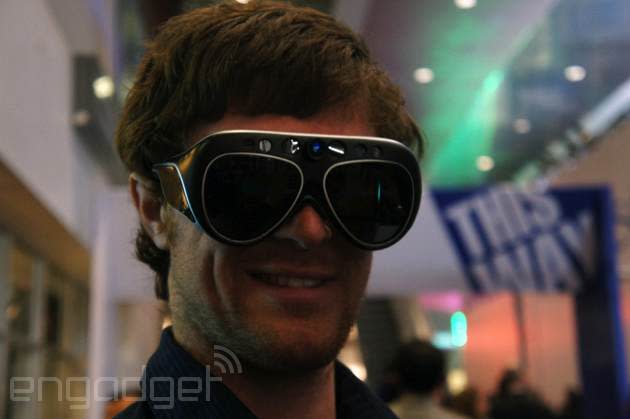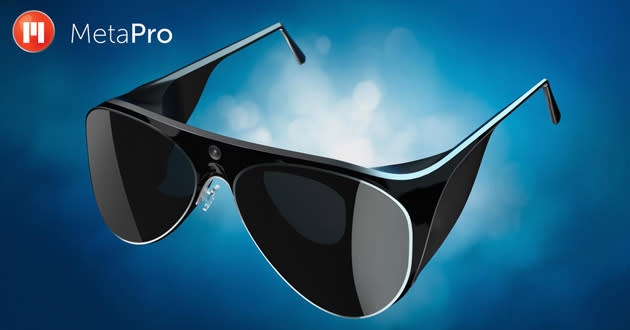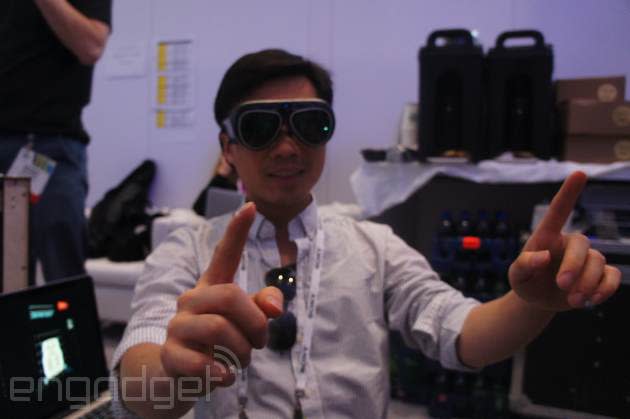The MetaPro glasses do some pretty amazing things with augmented reality

Yeah, I went through the whole "not another wearable" thing when the folks from the Meta team showed up sporting an early prototype of a device tethered to a small animal-style backpack. But one rep started namedropping some of the parties involved in the AR glasses -- names like Steve Mann. The wearables pioneer now sports a "chief scientist" designation on the company's site. And while we would have preferred to have been first on the demo list, it's hard to complain when the ones ahead of you are people like Paul Allen and Steve Wozniak. In fact, as they set up the demo in the green room behind our CES stage, one employee pulled out a small, translucent vase, measuring an inch or so tall. "Paul Allen made that one," he said, handing it to me.
For anyone who's ever spent time around a desktop 3D printer, it wasn't a particularly impressive artifact, more the sort of thing someone learning CAD might design in week two. What's impressive, of course, is how Allen designed it. The demo is really just a proof of concept for the technology, but it really drives home the connection between the real and the virtual that the device is bridging. A quick note about the hardware above, before we go any further: These being prototypes, they'll naturally look a fair bit slicker down the road than what you see. In fact, we're told that the final version of the MetaPro will look like a set of aviator glasses, with a little extra (including some wings on the side to help obscure some of the sensors. In fact, we've included a rendering of what that'll look like below.

The interface, too, is far from finished, and one of the company's big recent announcements was that the designer behind the Iron Man movie interface will be helping the UI -- so, naturally, the company drops a reference to Tony Stark's alter ego whenever possible. What I saw was an AR grid laid over the real world; the X, Y and Z axes laid out to give you a better idea of where the virtual objects are placed. The demo involves grabbing a virtual lump of clay, sculpting it with hand gestures and tossing it to a real-world 3D printer, thus making the virtual a reality. The system tracks hands without the need for gloves, identifying yours and others, so multiple people can interact in the same AR world at the same time. In the current demo, the system renders appendages as sort of covered in static, while the final version will be a fair bit subtler (thank you, Tony Stark).

In its final version, the MetaPro will run around $3,000, a hefty premium over the recently released developer kit, which ran $667. That's thanks in part to some premium parts like the Core i5 Haswell chip inside and the Carl Zeiss lenses. As the company happily points out, the MetaPro will also have a viewing angle that's 60 percent larger than Google Glass. Plenty of developer kits have been moved, and the company is expecting somewhere around 100 functioning apps when the product ships, including the aforementioned sculpting one.

